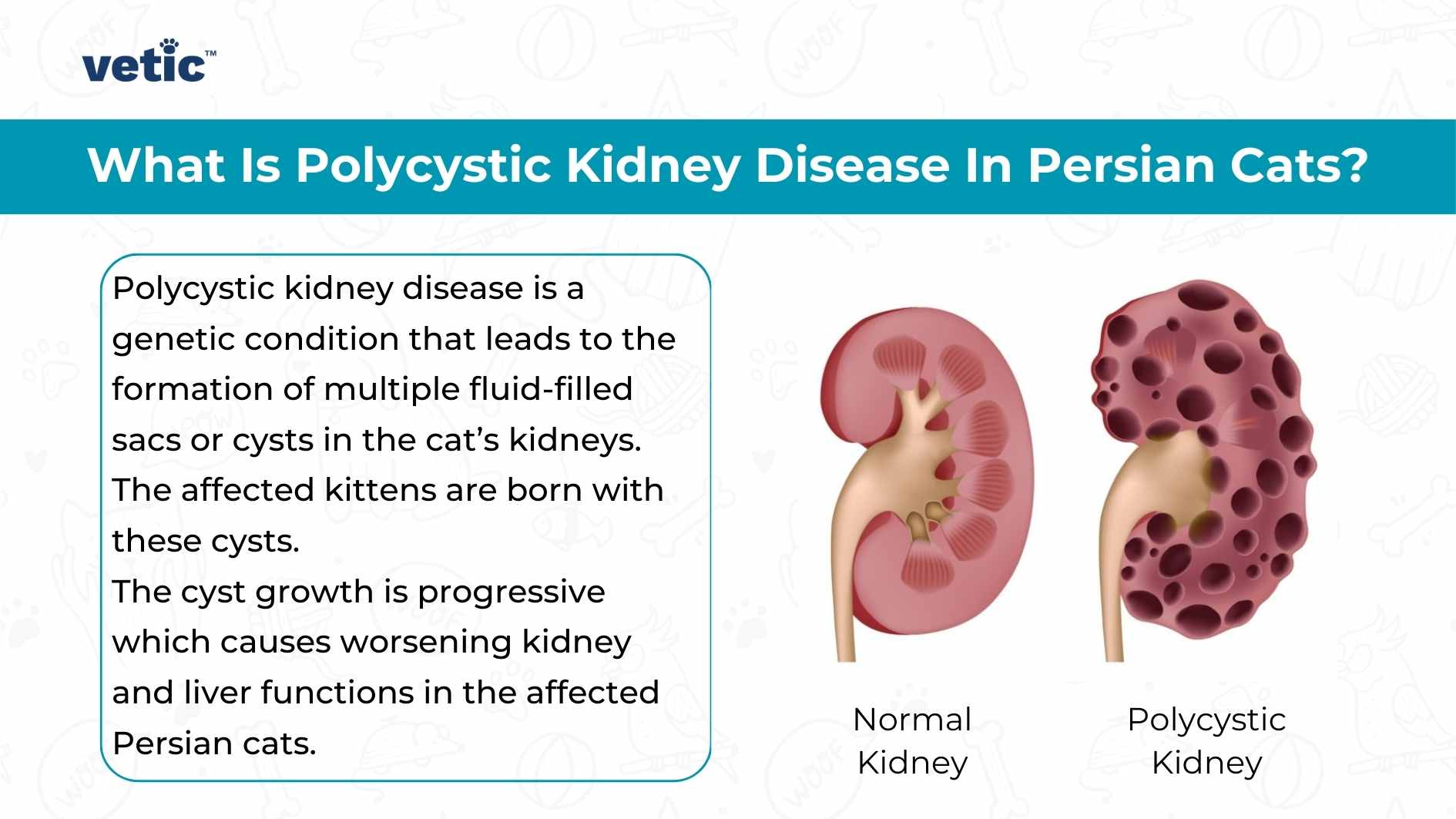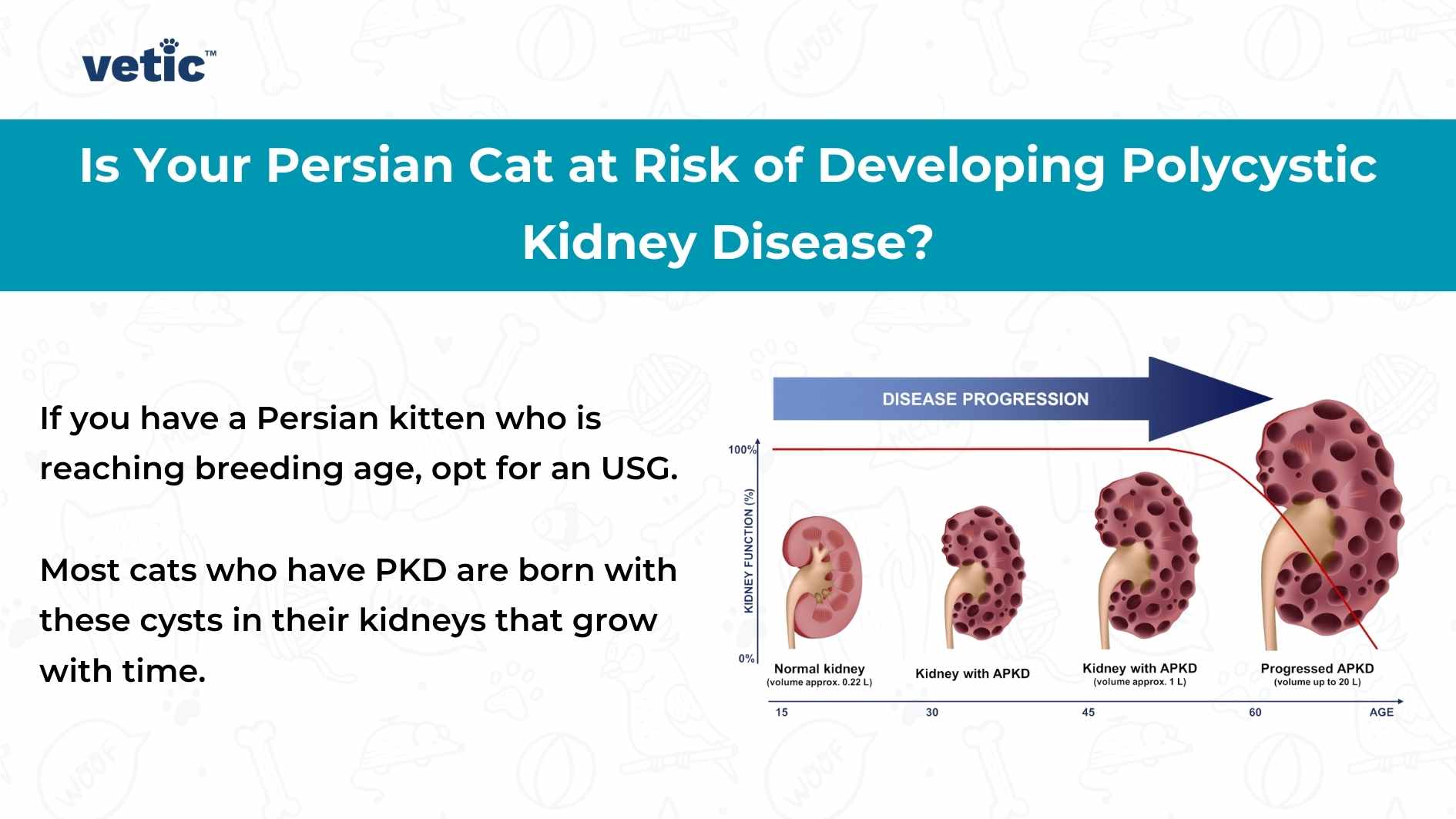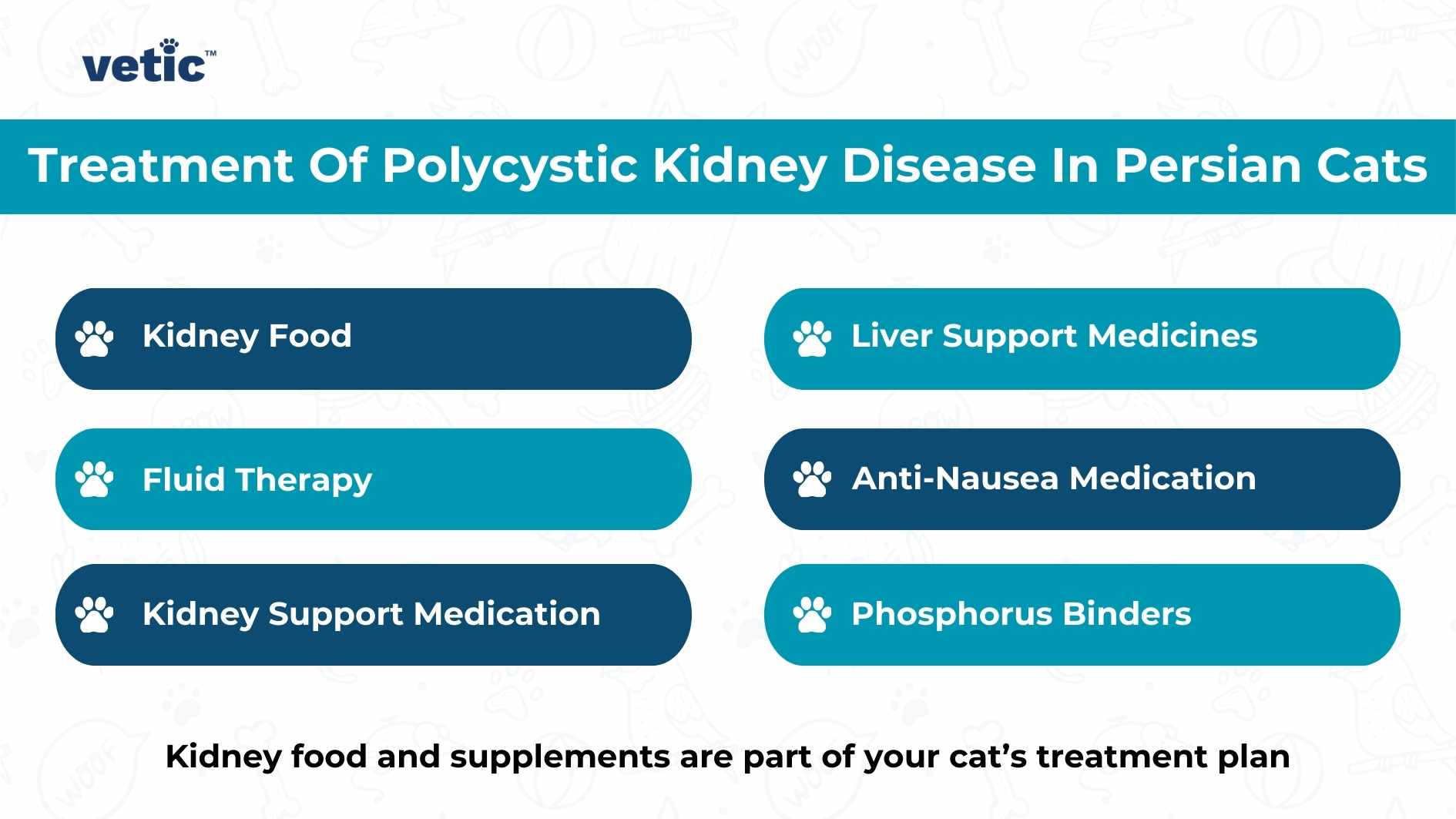Some cat breeds are more prone to genetic disorders such as polycystic kidney disease as compared to others. According to UFAW, around 36% to 49% Persian cats develop polycystic kidney disease (PKD) in their adulthood.
Polycystic kidney disease or PKD can cause renal failure in cats when left untreated.
What Is Polycystic Kidney Disease In Persian Cats?

Polycystic kidney disease is a genetic condition that leads to the formation of multiple fluid-filled sacs or cysts in the cat’s kidneys. The affected kittens are born with these cysts but they are too small to be detected when the kittens are young.
The growth of these cysts typically begins when the persian cats reach breeding age. These cysts may become visible on scans once they cats are older than 5 months.
The cyst growth is progressive which causes worsening kidney and liver functions in the affected Persian cats.
Is Your Persian Cat At Risk Of Developing Feline Polycystic Kidney Disease?

It is one of the most common and aggressive kidney diseases that is inherited by Persian cats. It is highly prevalent in Persian cats since it is an autosomal dominant trait. That means inheriting only one mutated gene is enough to cause polycystic kidney disease in cats.
If you have a Persian cat who is reaching breeding age (older than 5 months), opt for an USG to ensure that their kidneys are free from cysts. Most cats who have PKD are born with these cysts in their kidneys that grow with time.
Go in for preventive healthcare checkups and tests such as USGs to ensure that your cat doesn’t have any cysts in their kidneys. Along with USGs, the veterinarian will also recommend complete blood count, liver function and kidney function tests to check if there are any abnormalities present in the blood or serum.
Your Persian Cat Has Cysts Or PKD. What To Do Now?
Early diagnosis of polycystic kidney disease can help you manage your cat’s symptoms. Just because a Persian cat or kitten has cysts in their kidneys it doesn’t mean they will go into kidney failure rapidly. In many cases, the cysts enlarge very slowly and cats only begin to show signs of PKD when they are around 7 years old.
With early diagnosis and correct treatment, your veterinarian can help you slow the progression down. Your veterinarian will help you chalk out a proper diet, supplement and medicine plans so your cat lives a high quality and long life.
Even with the earliest possible diagnosis, polycystic kidney disease is not curable or 100% preventable. However, you can definitely slow down the onset of the diseases and reduce a huge part of the signs and symptoms.
If your cat has polycystic kidney disease you should not breed your cat. There is a 75% chance that your cat’s babies will end up with polycystic kidney disease even if the other parent is free from the disease.
What’ are The Signs Polycystic Kidney Disease in Persian Cats?
Sadly, there is no standard treatment of polycystic kidney disease. The clinical signs are almost identical to that of chronic kidney disease (CKD) in cats. The early signs of polycystic kidney disease in Persian cats include –
- Vomiting
- Reduced appetite
- Increased thirst
- Frequent urination
- Weight loss
Since the signs are often confusing and similar to other digestive issues and kidney conditions, the veterinarian should run a complete set of diagnostic tests including advanced ultrasound to check the health of the kidneys, especially, if the candidate is related to the Persian breed.
How is Polycystic Kidney Disease In Persian Cats Diagnosed
Even with modern DNA testing and blood and biochemistry tests it can’t be confirmed that a Persian cat or kitten showing signs similar to the early signs of Polycystic Kidney Disease actually has cysts in their kidneys.
These cysts can be miniscule, smaller than the size of grapes. A cat can have one larger cyst or a collection of 20 2mm ones, the diagnosis is the same!
The only way to diagnose Polycystic Kidney Disease in any cat is via ultrasound or USG. If your Persian cat is being lethargic, throwing up or experiencing anorexia, it’s a good idea to talk to your veterinarian about schedule a USG without delay.
Early diagnosis of the disease can help you manage the quality of your pet’s life.
What’s The Treatment For Polycystic Kidney Disease in Persian Cats?

The treatment is similar to CKD in cats as well. It focuses on management and reduction of the signs such as vomiting, anorexia, dehydration and pain.
Treatment of polycystic kidney disease in Persian Cats include –
- Therapeutic diets (kidney food)
- Fluid therapy
- Kidney support medication
- Liver support medicines
- Medicines for vomiting and nausea
- Phosphorus binders
Kidney food and supplements ARE part of your cat’s treatment plan. In fact, they play the central role in the management of all the clinical signs of PKD in cats.
Prognosis Of Polycystic Kidney Disease In Persian Cats
Any cat with polycystic kidney disease needs frequent USG, and blood tests to check the progress of the disease.
Frequent health checkups are mandatory for all Persians with traits of polycystic kidney disease to monitor the disease progress.
The veterinarian will adjust the medicine doses and diet according to their updated health status.
Persians with early-detected PKD can live a long life since the treatment can slow the progress of the disease.
